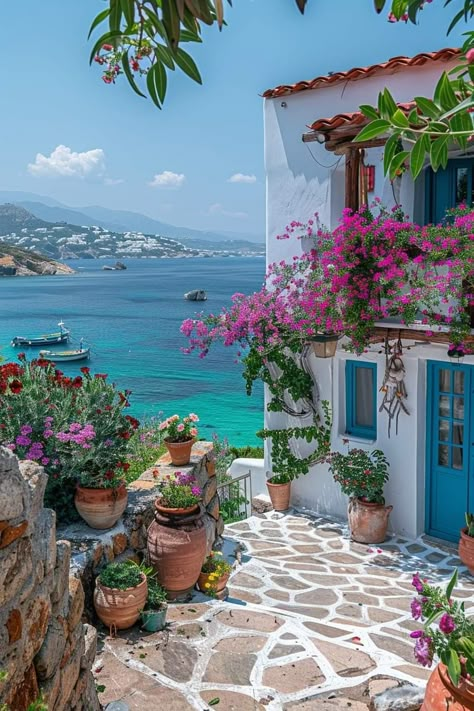The way a place is designed—from the layout of its streets to the architecture, signage, and public art—directly shapes how you feel, what you remember, and how much you enjoy your journey. Ever find yourself totally lost in the winding alleys of a Moroccan medina, or feeling oddly at peace in the open plazas of a Greek island village? Each environment sets a different psychological stage, and it’s wild how much that influences your mood and experience.
Design isn’t just about looking pretty; it’s about creating a sense of belonging, whether you’re a local or just passing through. The details—like the texture of a stone wall or the quirky font on a street sign—can either pull you in or leave you feeling a bit disconnected. Researchers have pointed out that travelers’ perceptions and satisfaction are often shaped by these built environment factors, which can make or break your desire to return or rave about a place.
So next time you’re dreaming of a getaway think about how every design choice, intentional or not, helps create that rich, memorable sense of place you end up carrying with you. Every public square, facade, and signpost leaves its mark on your journey, sometimes in ways you only notice long after you’ve left.

The Psychological Impact of Destination Design
Destination design is more than just function. The built environment—buildings, street layouts, art, signage—can nudge your mood, shift your sense of belonging, and even steer how you move through a place.
How Architecture Shapes Traveler Perceptions
Distinct architectural styles are like cultural shorthand. The whitewashed walls and blue domes of Santorini’s churches? Instantly, you know you’re in the Greek Islands. Meanwhile, Morocco’s intricate tilework and layered courtyards can spark curiosity and maybe a bit of awe.
Some spaces just feel good, you know? Wide, sunlit rooms with high ceilings—think neoclassical—tend to make people feel relaxed and open. In contrast, those tight alleys and overhanging roofs in certain medinas might feel cozy, but they can also crank up your alertness and sense of adventure. Even the materials—stone, wood, glass—shape whether a place feels sturdy, warm, or cutting-edge.
Urban Planning and Sense of Place
The way a city is laid out really changes how you interact with it. Grids like Manhattan’s make getting around a breeze, so you feel oriented and in control. But those meandering streets in old European cities? They practically invite you to get lost—and sometimes that’s the best part.
Open squares and pedestrian promenades are like magnets for people, encouraging you to linger and connect. On the Greek Islands, the waterfront planning ties together harbors, cafes, and plazas in a way that just feels right for wandering and chatting. Not all planning is perfect, though—cluttered or fragmented layouts can make walking a chore and leave you feeling detached. There’s research showing that destination attractiveness influences emotional attachment, which in turn shapes how sustainably travelers behave. It’s all connected, somehow.

Role of Public Art and Visual Elements
Public art gives a place its personality. Maybe you stumble on a mural, a statue, or a mosaic that tells you something about local history—or just makes for an unexpectedly great selfie backdrop. These touches can spark conversation or just linger in your memory.
Visual elements like fountains, lighting, and landscaping set the vibe. Athens, for example, has these big sculptures and splashes of street art that make urban plazas come alive. It’s not just about looks—these features can make you feel welcome or even like you belong there, which isn’t just a hunch.
Typography, Signage, and Navigational Experiences
Typography and signage are the unsung heroes of travel. Clear, consistent signs with a local twist—like the playful script on a Greek taverna or the elegant Arabic calligraphy in Morocco—set the mood before you even walk in the door.
Good signage is both readable and full of character. Wayfinding systems with maps, color codes, or familiar icons let you explore with confidence and (hopefully) less frustration. When it’s done right, you’re more likely to wander, try something new, and squeeze more out of your trip—even if you’re on a cruise or wandering ancient city lanes.


Global Case Studies in Place Psychology
Each destination throws you into a different urban and cultural setting, and those design choices—sometimes carefully planned, sometimes happy accidents—can really shape your emotions, memories, and overall impression.
Design Elements of Greece’s Urban Landscapes
Greece’s cities and villages blend ancient history with modern life in a way that just hits you—there’s awe, nostalgia, and a sense of something timeless. You’ll notice narrow paths lined with whitewashed walls, blue domes, and bursts of color from flowers, giving places like Santorini and Mykonos their signature look.
Public squares and markets are social hubs, while layered histories peek out from ruins and neoclassical touches. The Mediterranean light bouncing off stone and plaster changes how colors and shadows play, which definitely affects your mood and senses. The streets seem to invite you to slow down and soak it all in, and locals seem to use design to bring people together.
Taking it all in on a Greek Island cruise is a chance to see how both planned and organic design choices keep Greece’s appeal alive year after year.
Moroccan Environments and Cultural Identity
Morocco is a sensory feast—color, pattern, and texture everywhere you look. The detailed tiles, lush textiles, and centuries-old craft traditions are woven into every corner, from courtyards to fountains to those famously twisty alleyways. Everything is set up to create little oases away from the bustle.
Medinas are a maze, but that’s kind of the point. You never know what’s around the corner—a souk, a hidden garden, maybe a tiny café you’d never find twice. Public art and handmade details—doors, metalwork, tapestries—tell a story that feels both ancient and totally alive. The call to prayer, the spices in the air, the visual overload…it all anchors you in the moment and deepens your sense of connection.
Unintentional Versus Intentional Design Choices
Not every meaningful design moment is the result of a blueprint. In places like Greece and Morocco, you stumble across happy accidents—old infrastructure pressed into new uses, winding streets that seem to ignore any master plan, or a patchwork of signs and surfaces that somehow just work. The layers of history, the bits that crumble or clash, those are often what give a city its personality. Sometimes it’s the faded paint, sometimes it’s a square that’s been claimed by street vendors or kids playing soccer—it all adds up to something you can’t quite script.
Then again, there’s a different magic in the things that are clearly intentional: those carefully chosen viewpoints, the buildings that line up just so, or a plaza where every plant and bench feels like it’s in the right spot. These touches help you find your way, slow you down, or just make you feel good about being there. When the planned and the accidental overlap, you get a place that’s both surprising and comfortable—maybe that’s what makes travel feel so layered and memorable, even if you can’t always put your finger on why.
- 8shares
- Facebook0
- Pinterest8
- Twitter0


